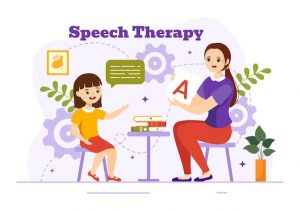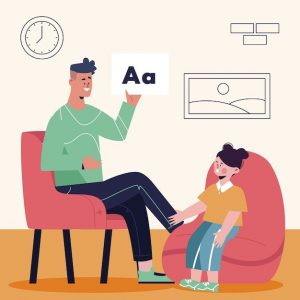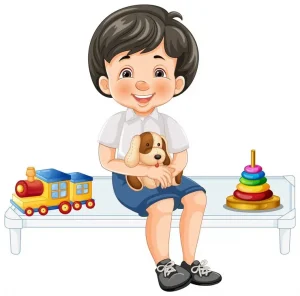Social Communication Disorder: What You Need to Know
Last Updated: June 5, 2024
Social Communication Disorder can manifest in various ways, such as a child struggling to take turns in conversation or having difficulty understanding social cues. For parents and educators, recognizing these signs is crucial. Understanding SCD empowers them to support children in developing essential communication skills. This article delves into what SCD is, the importance of early identification, and effective treatment options.
What is Social Communication Disorder?
Definition of Social Communication Disorder (SCD)
Social Communication Disorder (SCD) is a condition where an individual has significant difficulties using verbal and non-verbal communication in social settings. This means they might struggle to understand and use the social rules of language, such as knowing how to start a conversation, take turns in dialogue, or use and interpret gestures and facial expressions.
Explanation of Social Interaction and Pragmatics
To understand SCD better, it’s essential to grasp the concept of social interaction and pragmatics. Social interaction involves how we communicate with others in everyday situations. This includes knowing how to greet someone, ask for help, or join a group conversation. Pragmatics, on the other hand, refers to the use of language in context. It involves knowing what to say, how to say it, and when to say it appropriately.
People with SCD often face challenges with these aspects of communication. For example, they might not understand the nuances of polite conversation, or they may have trouble interpreting non-verbal cues like body language or tone of voice.
How SCD Differs from Other Communication Disorders Like Autism
While SCD shares some similarities with Autism Spectrum Disorder (ASD), there are key differences that set them apart. Both conditions involve difficulties with social communication, but the primary distinction lies in the presence of restricted and repetitive behaviors, which are characteristic of autism but not SCD.
Here’s a breakdown of the differences:
- Autism Spectrum Disorder (ASD): Individuals with ASD typically exhibit restricted and repetitive patterns of behavior, interests, or activities. They may have an intense focus on specific topics, repeat actions or phrases, and display sensory sensitivities.
- Social Communication Disorder (SCD): Individuals with SCD primarily struggle with the social use of verbal and non-verbal communication. They do not exhibit the restricted and repetitive behaviors seen in autism. Their challenges are mainly related to social interaction and pragmatics, such as having difficulty understanding jokes, making eye contact, or adapting their speech based on the social context.
SCD vs. Autism: Key Differences
| Aspect | SCD (Social Communication Disorder) | Autism Spectrum Disorder (ASD) |
|---|---|---|
| Communication | Primarily, social communication issues | Social communication and behavioral challenges |
| Repetitive Behaviors | Not present | Present |
| Social Skills | Difficulty with social cues | Difficulty with social cues and restricted interests |
| Language Development | Generally normal, though pragmatic issues are present | May have delayed or atypical language development |
| Non-verbal Communication | Struggles with interpreting body language and facial expressions | Challenges with both using and understanding non-verbal communication |
| Flexibility | Typically more flexible, with less need for routine | Often has a strong preference for routine and sameness |
| Focused Interests | No specific intense or restricted interests | Often has intense, restricted interests or obsessions |
| Diagnosis Age | It can be diagnosed later when social demands increase | Often diagnosed in early childhood |
| Learning Abilities | Usually average, but social communication impacts learning | Can vary widely from above average to intellectual disability |
Know more: Autism vs. Speech Issues: Understanding Social Pragmatic Disorder.
Symptoms of Social Communication Disorder
Understanding the symptoms of Social Communication Disorder (SCD) can help parents, educators, and caregivers identify and address the challenges early on. Let’s dive into the verbal and non-verbal communication challenges associated with SCD, as well as some common symptoms to look out for.
Verbal and Non-Verbal Communication Challenges
Individuals with SCD face difficulties in both verbal and non-verbal communication. These challenges can impact their ability to interact effectively in social settings. Here are some key areas where these difficulties may arise:
- Verbal Communication: This includes speaking, understanding, and using language appropriately. People with SCD may have trouble organizing their thoughts into coherent speech, or they might use language inappropriately in social contexts.
- Non-Verbal Communication: This involves the use of body language, facial expressions, and gestures. Individuals with SCD may find it hard to interpret these cues or use them correctly. For example, they might not understand the importance of eye contact or may misinterpret someone’s tone of voice.
Common Symptoms
The symptoms of SCD can vary widely among individuals, but some common signs include:
- Difficulty Responding to Others: Individuals with SCD may struggle to respond appropriately in conversations. They might give irrelevant answers, repeat what others have said, or fail to provide the necessary responses.
- Challenges Using Gestures: Understanding gestures, such as waving or pointing, can be difficult for those with SCD. They might not use gestures to communicate or might misinterpret the gestures of others.
- Trouble Taking Turns in Conversation: Conversational turn-taking is a significant challenge. Individuals with SCD might interrupt frequently, speak out of turn, or have difficulty maintaining the flow of conversation.
- Struggles with Understanding Context: Understanding the context of a conversation is crucial. People with SCD may take things literally, miss jokes or sarcasm, and struggle with understanding idioms or figurative language.
- Limited Use of Facial Expressions: Expressing emotions through facial expressions can be limited or inappropriate. For instance, they might not smile when happy or may have a neutral expression regardless of the situation.
Symptoms of Social Communication Disorder
| Symptom Category | Examples |
|---|---|
| Verbal Communication | – Difficulty responding – Using gestures inappropriately – Trouble taking turns in conversation – Difficulty maintaining topics – Struggling to initiate or close conversations |
| Non-Verbal Communication | – Misinterpreting body language – Inappropriate or limited use of facial expressions – Lack of eye contact or excessive staring – Difficulty understanding tone of voice |
| Understanding Context | – Taking things literally – Difficulty understanding idioms, humor, or sarcasm – Struggling with indirect or implied messages |
| Social Interaction | – Difficulty making and keeping friends – Challenges in adapting speech based on the listener or situation – Inappropriate social behaviors – Limited ability to express emotions appropriately |
Diagnosing Social Communication Disorder
Recognizing and diagnosing Social Communication Disorder (SCD) is a crucial step in providing the necessary support and interventions for affected individuals. Here’s an overview of how SCD is diagnosed, why it’s important to rule out autism, and common co-occurring issues.
Criteria for Diagnosing SCD
Diagnosing SCD involves a thorough assessment by a healthcare professional, often a speech-language pathologist or a psychologist. The diagnostic criteria for SCD, as outlined in the DSM-5 (Diagnostic and Statistical Manual of Mental Disorders, 5th Edition), include the following:
- Persistent Difficulties in Social Use of Verbal and Nonverbal Communication: This includes challenges in using communication for social purposes, such as greeting or sharing information, and problems with adjusting communication to suit different social contexts (e.g., speaking differently to a child versus an adult).
- Deficits in Changing Communication to Match Context or Listener Needs: Individuals with SCD may struggle to switch between formal and informal speech or to adjust their communication style based on the listener’s needs.
- Difficulty Following Rules for Conversation and Storytelling: This involves challenges with turn-taking, rephrasing when misunderstood, and using verbal and nonverbal signals to regulate interactions.
- Problems Understanding What is Not Explicitly Stated: This includes difficulties with making inferences and understanding idioms, humor, metaphors, and multiple meanings that depend on context.
- Functional Limitations: The communication deficits must result in significant limitations in effective communication, social participation, social relationships, academic achievement, or occupational performance.
Importance of Ruling Out Autism
It’s essential to distinguish SCD from Autism Spectrum Disorder (ASD) because, while both involve difficulties with social communication, autism also includes restricted and repetitive patterns of behavior, interests, or activities. To diagnose SCD, professionals must ensure that the communication issues are not better explained by ASD. This differential diagnosis is critical because it influences the treatment and support strategies used.
Common Co-Occurring Issues
Individuals with SCD often have other co-occurring conditions that can impact their communication and overall functioning. Some of the common issues include:
- Language Impairment: This involves difficulties with the form and content of language, such as grammar, vocabulary, and sentence structure.
- Attention-Deficit/Hyperactivity Disorder (ADHD): Children with ADHD may struggle with impulsivity, attention, and hyperactivity, which can complicate their social communication difficulties.
- Learning Disabilities: These can affect the ability to acquire and use academic skills, which may further hinder social communication and interaction.
- Speech Sound Disorders: These include difficulties with the articulation and clarity of speech sounds, making it hard for others to understand the individual.
Diagnosing SCD accurately and identifying any co-occurring conditions is crucial for developing an effective intervention plan. Early diagnosis and intervention can significantly improve communication skills and social functioning.
Treatment and Management of Social Communication Disorder
Effectively managing Social Communication Disorder (SCD) requires a multifaceted approach that involves various therapies and the collaboration of professionals, family, and educators. Here’s an overview of how SCD is treated and managed.
Role of Speech-Language Pathologists
Speech-language pathologists play a crucial role in diagnosing and treating SCD. These professionals are trained to understand the complexities of communication disorders and can tailor interventions to meet the specific needs of each individual. They work closely with children and adults to improve both verbal and non-verbal communication skills, helping them navigate social interactions more effectively.
Types of Therapies and Interventions
There are several types of therapies and interventions used to treat SCD. The main goal of these treatments is to enhance the individual’s ability to communicate effectively in social situations. Here are the primary types of therapy:
One-on-One Therapy
In one-on-one therapy, the speech-language pathologist works directly with the individual in a personalized setting. This type of therapy focuses on the specific challenges faced by the individual, providing targeted exercises and strategies to improve their social communication skills. One-on-one therapy can help with:
Group Therapy
Group therapy involves multiple individuals working together under the guidance of a speech-language pathologist. This setting provides a safe and structured environment for practicing social communication skills with peers.
Involvement of Family and Educators
Family and educators play a vital role in the treatment and management of SCD. Their involvement is crucial for reinforcing the skills learned during therapy and ensuring consistent practice in everyday situations.
Conclusion
Understanding and addressing Social Communication Disorder (SCD) is crucial for helping people improve their communication and social skills. Recognizing the signs of SCD early allows parents, educators, and caregivers to provide the right support and interventions. This can help individuals with SCD build better relationships, succeed in school, and participate more fully in social situations. Early intervention can enhance communication skills, promote social integration, and boost self-esteem.
If you think your child or someone you know has SCD, it’s important to seek professional help. Speech-language pathologists are trained to diagnose and treat SCD with personalized strategies. Wellness Hub offers many resources and support for people with communication challenges. Visit our support page for more information. Remember, early and consistent support can make a big difference. Together, we can create a supportive environment that helps individuals with SCD thrive.
Frequently Asked Questions:
1. What is Social Communication Disorder (SCD)?
Social Communication Disorder (SCD) is a condition where individuals have trouble using verbal and non-verbal communication in social settings. This includes difficulties with understanding and following social rules, such as taking turns in conversations and interpreting body language and facial expressions.
2. How is Social Communication Disorder different from autism?
While both SCD and Autism Spectrum Disorder (ASD) involve challenges with social communication, autism also includes restricted and repetitive behaviors, which are not present in SCD. SCD focuses primarily on difficulties with social interaction and pragmatics.
3. What are the common symptoms of Social Communication Disorder?
Common symptoms of SCD include difficulty responding to others, using gestures, taking turns in conversation, understanding context, and using appropriate facial expressions. These challenges can affect both verbal and non-verbal communication.
4. How is Social Communication Disorder diagnosed?
SCD is diagnosed by a healthcare professional, such as a speech-language pathologist or psychologist, based on specific criteria outlined in the DSM-5. Diagnosis involves observing persistent difficulties in social communication and ruling out other conditions like autism.
5. Can Social Communication Disorder occur with other conditions?
Yes, SCD often co-occurs with other conditions such as language impairment, ADHD, learning disabilities, and speech sound disorders. These co-occurring issues can further complicate communication challenges.
6. What treatments are available for Social Communication Disorder?
Treatments for SCD typically involve speech-language therapy. This can include one-on-one therapy, group therapy, and strategies for families and educators to support the individual’s communication skills. Early intervention and consistent practice are crucial for improvement.
7. How can families support a child with Social Communication Disorder?
Families can support a child with SCD by engaging in activities that promote social communication, such as turn-taking games, reading together, discussing emotions, and using visual supports. Consistent practice and reinforcement at home are essential for progress.
8. Where can I find resources for Social Communication Disorder?
Wellness Hub offers comprehensive resources and support for individuals with SCD. Visit our support page for more information and guidance on managing social communication challenges.
9. Why is early intervention important for Social Communication Disorder?
Early intervention is important because it can significantly improve communication skills and social interactions. Addressing SCD early helps individuals develop the necessary skills to succeed socially, academically, and professionally.
10. Can adults have Social Communication Disorder?
Yes, adults can have SCD. While the symptoms and challenges may be different from those in children, adults with SCD can benefit from speech-language therapy and other interventions to improve their social communication skills.
About the Author:
Anuradha Karanam
Speech-language pathologist (7+ years of experience)
Anuradha Karanam is a skilled speech-language pathologist with over 6 years of experience. Fluent in Tamil, Telugu, Hindi, and English, she specializes in parent counseling, speech sound disorders, fluency assessment, and speech-language evaluations. Anuradha excels at working with children with developmental disorders, offering creative and effective therapy programs. Currently, at Wellness Hub, she holds a BASLP degree and is registered with the RCI (CRR No A85500). Her patience, ambition, and dedication make her a trusted expert.
Connect with Anuradha to learn more about how she can help you or your loved one find their voice.
Book your Free Consultation Today
Parent/Caregiver Info:
Client’s Details:
* Error Message








